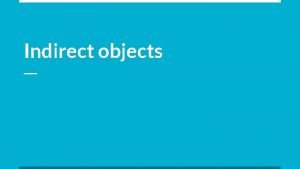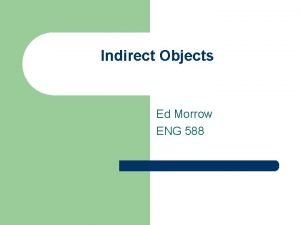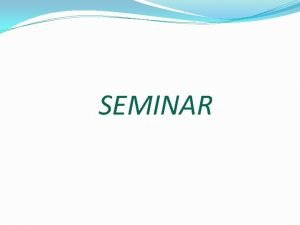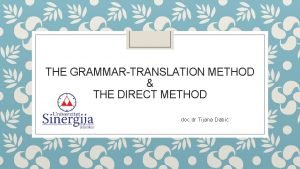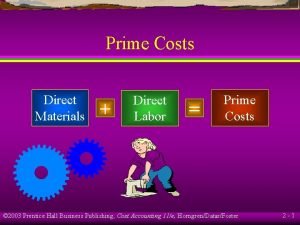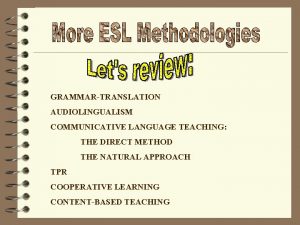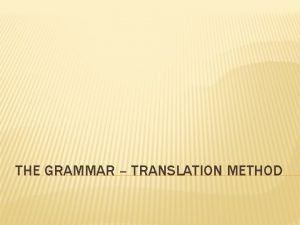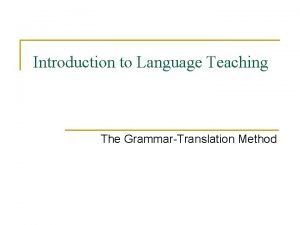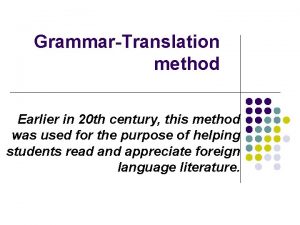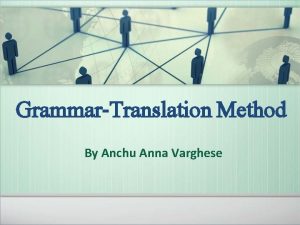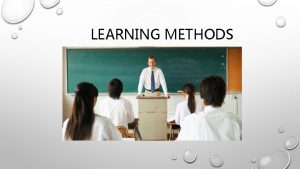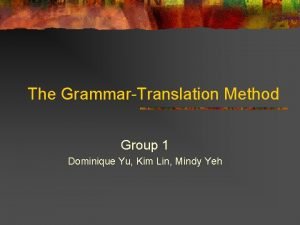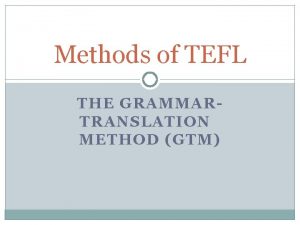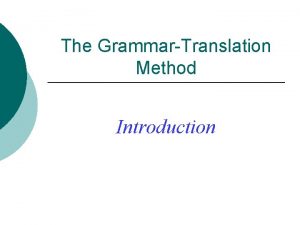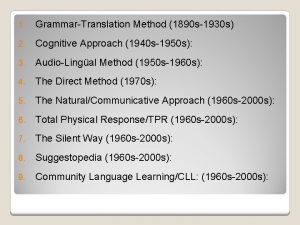THE GRAMMARTRANSLATION METHOD THE DIRECT METHOD doc dr













- Slides: 13

THE GRAMMAR-TRANSLATION METHOD & THE DIRECT METHOD doc. dr Tijana Dabić

Why do approaches to teaching languages change through time?

THE GRAMMAR-TRANSLATION METHOD ◦ Classical Method ◦ Time in 19 th century ◦ PURPOSE • • Helping students read and appreciate foreign language literature; Through the TL students get more familiar with the grammar of the NL; Speak and write their language better; Grow intellectually;

QUESTIONS (30 M) - COMP. Qs - MAKE INFERENCES - OWN EXPERIENCE TRANSLATE S CAN ASK T ABOUT V READ TEXT IN TL COGNATES (POSSIBILITY FIND OPPOSITE LIST OF WORDS POSIBILIDAD) (ANTONYMES) COMPOSITION TRANSLATE GRAMMAR DEDUCTIVE WAY RULE PRACTICE MEMORIZE LIST OF WORDS AND IDIOMS USE IN SENTENCES (W) (ABOUT THE TOPIC RELATED TO THE TEXT)

BEFORE YOU ANSWER THE QUESTIONS WATCH VIDEOS ◦ https: //www. youtube. com/watch? v=c 4 f. WX_ 82 x 6 M ◦ https: //www. youtube. com/watch? v=IO 6 E 4 ZSCD 4 READ BOOK ◦ P. 11 -22

QUESTIONS ◦ Why should we teach languages? ◦ Who should we teach? ◦ What are materials that are required? ◦ How does a learner learn a language? ◦ How should a teacher teach? ◦ What areas of language are emphasized? What language skills are emphasized? ◦ How should we help our students to remember a lanaguge? ◦ What is the role of student’s native language? ◦ How does the teacher respond to students error?

REVIEW OF TECHNIQUES ◦ Translation of literary passage ◦ Synonyms/Antonymes ◦ Cognates ◦ Deductive application of rules ◦ Fill-in-the-blanks ◦ Memorization ◦ Use words in sentence ◦ Composition

THE DIRECT METHOD ◦ NATURAL METHOD ◦ Around 1900 ◦ PURPOSE • How to use foreign language to communicate; • No translation allowed; • Meaning conveyed directly through the use of demonstration and visual aids;

Teacher POINTS to the part of the MAP The text is about READ a text about the MAP Look at a MAP STUDENTS ANSWER IN FULL SENTENCES Students can ask questions. Teacher explains in drawings. TEACHER ASKS NEW QUESTIONS Teacher invites students to ask questions PRONOUNCIATION DICTATION WRITING GRAMMAR Questions about prepositions Fill-in-the blanks (on topic or situation)

BEFORE YOU ANSWER THE QUESTIONS WATCH VIDEOS ◦ https: //www. youtube. com/watch? v=A 0 Gxc e. Iy. Qt. E ◦ https: //www. youtube. com/watch? v=MPw. FS 29 QN 50 READ BOOK ◦ P. 23 -33

QUESTIONS ◦ Why should we teach languages? ◦ Who should we teach? ◦ What are materials that are required? ◦ How does a learner learn a language? ◦ How should a teacher teach? ◦ What areas of language are emphasized? What language skills are emphasized? ◦ How should we help our students to remember a lanaguge? ◦ What is the role of student’s native language? ◦ How does the teacher respond to students error?

REVIEW OF TECHNIQUES ◦ Reading aloud ◦ Questions and answers exercise ◦ Getting student to self-correct ◦ Conversation practice ◦ Fill-in-blank exercise ◦ Dictation ◦ Map drawing (listening) ◦ Paragraph writing

Task 1: In two columns write down the underlying principles of GTM and DAM (In both chapters read the content under the title THINKING ABOUT EXPERIENCE) ◦ SIMILARITIES? ◦ DIFFERENCES? ◦ ADVANTAGES AND DISADVANTAGES OF EACH? ◦ COMPARE IT TO NOWADAYS TEACHING.
 Direct object
Direct object Ditransitive verb
Ditransitive verb Bilingual method of teaching english
Bilingual method of teaching english Techniques of direct method
Techniques of direct method Principles of direct method
Principles of direct method Direct material + direct labour
Direct material + direct labour Hình ảnh bộ gõ cơ thể búng tay
Hình ảnh bộ gõ cơ thể búng tay Ng-html
Ng-html Bổ thể
Bổ thể Tỉ lệ cơ thể trẻ em
Tỉ lệ cơ thể trẻ em Gấu đi như thế nào
Gấu đi như thế nào Glasgow thang điểm
Glasgow thang điểm Chúa yêu trần thế alleluia
Chúa yêu trần thế alleluia Môn thể thao bắt đầu bằng chữ đua
Môn thể thao bắt đầu bằng chữ đua
